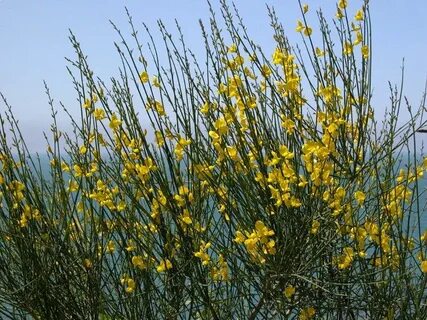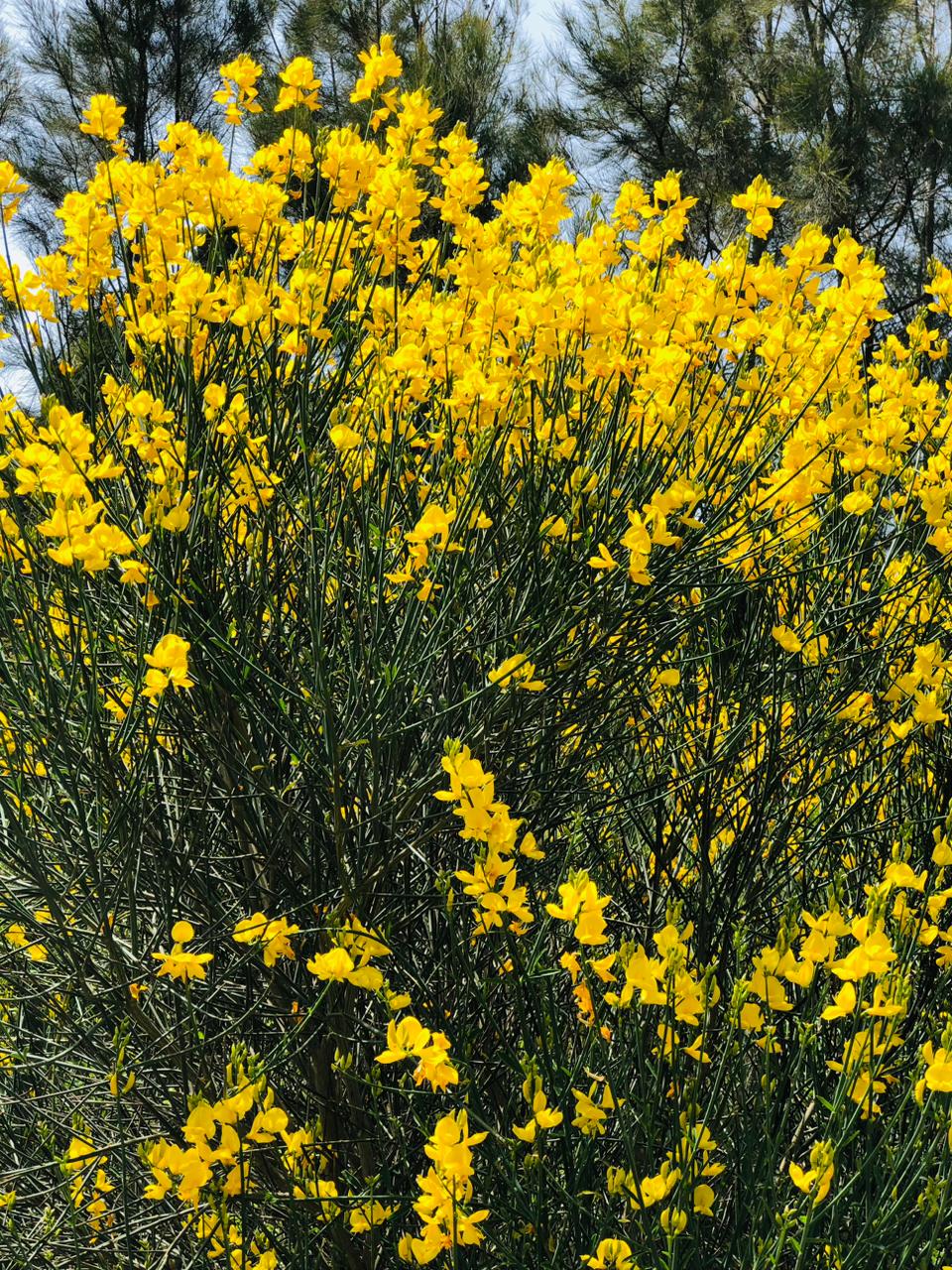Research of Genista hispanica L. in the territory of the Dendrology Garden
Genista hispanica L. (Spanish gentian) is a species of flowering plant in the genus Genista L. (Genista), family Fabaceae, native to southern France and northern Spain. Spanish nasturtium grows wild on the western shores of the Mediterranean Sea, the Crimean Peninsula and the Canary Islands. The genus name Genista L. comes from the Latin word "genetum", which means "to be born".
The plant was considered a symbol of fertility even during the ancient Roman culture. The name of the species hispanica of the genus belongs to its native Spain. First classified by Carl Von Linne, the species Lissera hispanica (L.) Fourr., Spartium hispanica (L.) Spreng., Telinaria hispanica (L.) C.Presl., Ulex hispanica (L.) Anon., Voglera hispanica ( L.) Fourr. etc synonyms are available.
Spanish nasturtium is a small densely branched shrub that can grow up to 2.5 cm high and 1.5 m wide. There are numerous small thorns at the base of the trunks of the bush, which limits the transpiration process, thereby increasing the plant's tolerance to drought for a certain period of time. The leaves are long, narrow, the upper surface is dark green, and the lower surface is gray.
The flowering period of the plant, whose flowers are yellow and fragrant, occurs in May-June. Its fruits, which ripen in August, are in the shape of curved beans, 4-5 cm long, short, smooth, multi-seeded, brown-colored. The seeds are various angular, oblong, round, similar to lentils. The species is bisexual and pollinated by insects, it reproduces vegetatively and generatively. Since the flowers of the plant are nectary, they attract dry invertebrates, bees, butterflies, etc. insects, and its seeds attract birds and small mammals, playing a major role in their food source.
Genista hispanica is a drought-resistant, atmospheric pollution-tolerant, quick-coloring, light-loving plant. When placed in poorly lit rooms, small leaves, sparse growth, easy breaking or bending, faster shedding of leaves, and discoloration can be observed. It should receive at least 6 hours of direct sunlight to ensure optimal growth. In areas with little sun, it is possible to provide the plant's light needs with special wavelengths with artificial lighting, especially with LED lights. Plants such as Spanish nasturtium that grow in full sunlight need 30-50 W/ft2 of artificial light.
Genista hispanica L. prefers low humidity soil especially during the growing season. It grows in sandy, medium clay, neutral and alkaline soils. Depending on the frequency of watering, the balance of watering must be observed, as it can cause root rot, leaf yellowing or shedding. Spanish nasturtium grows best in areas with an average temperature of 5-38°C and is cold-resistant. As a result of a keen change in temperature, the leaves of the plants become discolored and the ends dry, but it is a very resistant species to the wind.
Species aphidis and Australian furrowed paddy can cause damage. Aphids are 3 mm and smaller, while the Australian furrowed pad is 3-7 mm. They live on the axils of the plant and feed by sucking the sap of the plant. They are more active and develop rapidly in warm weather, and multiply intensively from late summer to early autumn.
In order to ensure the protection and development of plants, to initially carry out preventive measures in early spring, to determine suitable methods of combating detected harmful organisms, to use organic and mineral fertilizers, especially when the flower buds of the plant are observed to extend the flowering period, solution in phosphorus-containing water It is important to apply mineral fertilizers 1-2 times.
The ecological role of the Spanish goose in nature is great. Thus, the species is a source of food for insects, birds, small mammals and various wild animals in nature, and plays an important role for their survival. It is listed as an invasive species in areas such as Australia, New Zealand and California due to its ability to crowd out native vegetation and alter ecosystems. Although it is not currently endangered, it is important to protect its natural habitat, especially in areas where the plant is endemic.
In Spain, strong fibers are obtained from the bark of the plant's stems for woolen cloths. Although real jeans are thought to be made of pure cotton, it is the fibers obtained from the Spanish cotton that give it strength. It is traditionally used in the field of medicine due to its diuretic properties.
It has detoxifying, antiseptic properties, in medicine, it is used in the treatment of diseases such as kidney stones, urinary tract infections and rheumatism, and its flowers are used in the treatment of the digestive system. Although it is claimed to be a poisonous plant, its flowers can be made into tea or mixed with honey and used as a sweet.
Its flowers are also used to flavor a type of bread called "pan de gachas" in traditional Spanish cuisine, especially in the Andalucia region. In Spanish culture, Genista hispanica L. is a traditional and symbolically important plant during the feast of St. John, celebrated on June 24, and its bright yellow flowers are used to decorate bonfires as a symbol of the sun and fire. In ancient Celtic mythology, it represents the energy of new beginnings as a symbol of the spring equinox. According to beliefs, a small part of the plant pinned to clothes brings luck and protection from evil spirits.
Due to its many useful properties, the decorative plant of the Spanish rose is widely used in greening of Baku city. Recommended planting areas are gardens, parks, backyards, fence borders, slopes and coastal areas. Due to the strong plexus of its roots, as well as partial absorption of excess moisture, it is purposefully planted in areas considered to be landslide zones. It helps prevent erosion and improve soil structure.
In the soil samples brought from the polluted areas by the "Ecology and Acclimatization" laboratory of the "Dendrology Garden" PLE, the Genista hispanica plant was planted in a pot, the species did not die in the heavy metal-contaminated soil, but continued its development. Caesalpinia gilliesii D. Dietr., placed in the same environment as Hibiscus syriacus L., and Genista hispanica L. showed longer persistence.
Due to its rich cultural and symbolic history, its practical use in traditional medicine and cooking, as well as its bio-ecological indicators, significant ecological benefits - the ability to improve soil quality and prevent erosion, it is appropriate to use it in the Absheron Peninsula, as well as in the greening of Baku city and surrounding areas.






